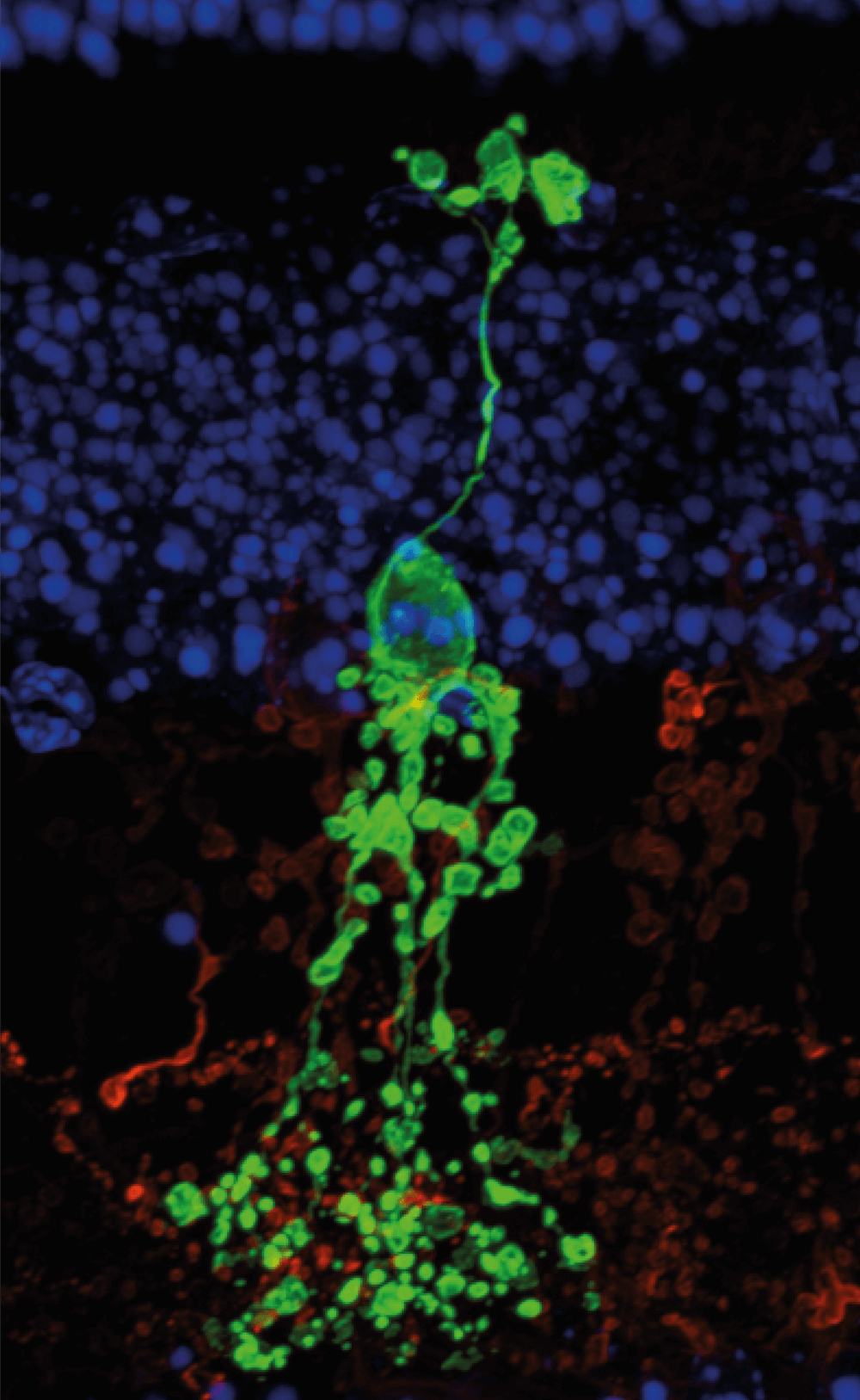
Over 100 years have passed since the identification of the five classes of retinal neurons. But in the adventurous world of science and ophthalmology, there’s always someone digging deeper. And now, researchers from the University of Utah’s John A. Moran Eye Center have revealed the existence of a retinal interneuron that doesn’t appear to belong to any of the existing retinal neuron classes. The team made the distinction based on the molecular properties, physiology, and morphology of the interneuron; indeed, its handbell shape gives the new Campana cell its name.
Though the Campana cell shares similarities with bipolar cells (relaying visual signals from photoreceptors to retinal ganglion cells) and shares features of amacrine cells (such as their short neurite morphology, some specific inhibitory signaling roles, and expression of certain biomarkers), they also differ significantly enough from these cells, according to the researchers, that they could be considered a new class of retinal neuron. And they may play an unconventional role in visual processing; for one thing, when stimulated with light, Campana cells react and activate for an abnormally long time – up to 30 seconds following a 10-ms stimulus. Lead researcher Ning Tian suggested the Campana cell may play a role in temporal memory, given that persistent firing of neurons in the brain is involved in memory and learning. Further research is needed to elucidate just what this uncanny cell class does – but we’ll be keeping our eyes peeled.
References
- BK Young et al., Proc Natl Acad Sci USA, 118, e2104884118 (2021). PMID: 34702737.
